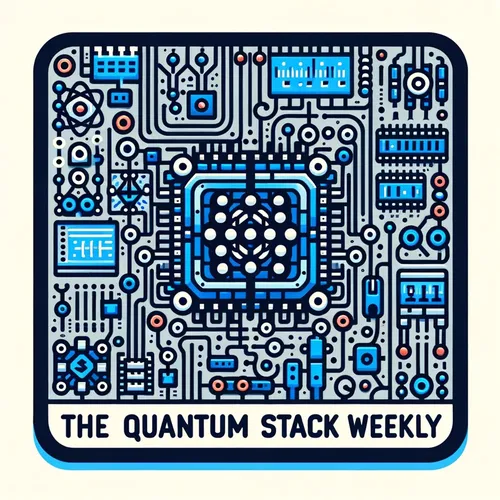Neglectons: Quantum Computing's Hidden Treasure | The Quantum Stack Weekly
- Author
- Quiet. Please
- Published
- Sun 24 Aug 2025
- Episode Link
- https://www.spreaker.com/episode/neglectons-quantum-computing-s-hidden-treasure-the-quantum-stack-weekly--67495828
This is your The Quantum Stack Weekly podcast.
Sometimes, the quantum world turns up hidden treasures in the least expected places. Yesterday, a headline from the University of Southern California and their global collaborators caught my eye: researchers have discovered a new quantum particle—a so-called neglecton—that could redefine how we build universal quantum computers. If you’re waiting for a moment that puts the “quantum” back in quantum leap, this is it.
Let’s skip the pleasantries. I’m Leo, your guide on The Quantum Stack Weekly, but today, I’m just as much a time traveler as a scientist, standing at the threshold of an era-changing shift. Here’s what excites me: for decades, experts believed certain mathematical objects—those with “quantum trace zero”—were, forgive the pun, mathematically neglected. But now, in a twist worthy of an O. Henry ending, these so-called neglectons are exactly what we need. By combining them with Ising anyons—particles harnessed in topological quantum computing—researchers show we can achieve universal computation using braiding alone.
Let’s dramatize that for a moment. Picture a sprawling mansion, but a few rooms are unsafe—the floors quake, the ceilings leak. Traditional wisdom says you renovate every room. But the brilliance here is different: design the operations so all your quantum computations dance safely within the stable rooms, letting the problematic spaces remain untouched. That’s what the team led by Aaron Lauda accomplished—they’re not just patching up the theory, they’re leveraging it, converting mathematical trash into treasure.
Why does this matter to the real world? Universal quantum computing means breaking through barriers. Imagine faster, more flexible algorithms for cryptography, simulation, and logistics. It means doing with quantum braiding what we used to need magic for—except now it’s cold, hard, testable quantum science. The neglecton approach promises to simplify the hardware needed for computation, potentially reducing complexity and boosting stability.
But the implications stretch even further. While the experimental realization is still on the horizon, teams are already looking for physical systems where neglectons can naturally emerge. That’s happening in labs in Los Angeles right now—physicists peering through superconducting circuits, seeking the subtle fingerprints of these overlooked quantum states. It’s bottom-up engineering: theory guiding experiment, experiment revealing deeper theory—a feedback loop as complex and beautiful as quantum superposition itself.
You see, this mirrors our world. Just as mathematicians found value in the neglected, today’s global headlines overflow with stories about finding purpose where others see none—be it AI revelations for manufacturing, medical breakthroughs, or new energy technologies. The quantum stack, in both hardware and humanity, thrives when we embrace what others discard.
I’m Leo. If today’s story sparked questions or if there’s a concept you want unraveled on air, send an email to [email protected]. Don’t forget to subscribe to The Quantum Stack Weekly. This has been a Quiet Please Production; for more info, visit quiet please dot AI. Everything’s entangled—especially the future.
For more http://www.quietplease.ai
Get the best deals https://amzn.to/3ODvOta
